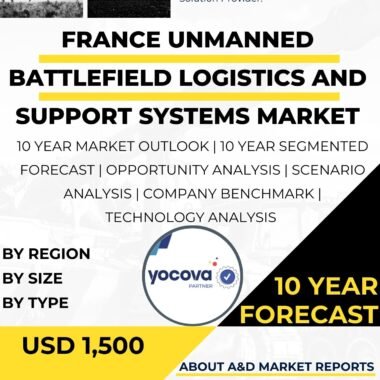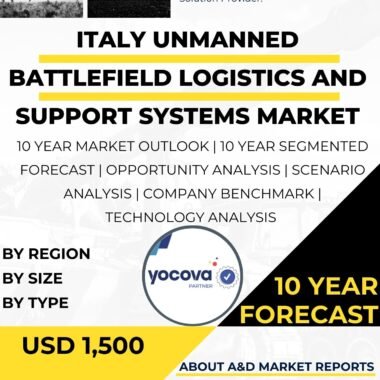Description
The Belgium unmanned battlefield logistics and support systems market is a significant segment within the country’s defense industry. Unmanned battlefield logistics and support systems play a crucial role in enhancing military operations by providing efficient and autonomous means of transporting supplies, equipment, and resources to and from the battlefield. These systems reduce the risks faced by soldiers, increase operational efficiency, and contribute to the overall effectiveness of military missions. Belgium recognizes the importance of unmanned systems in its defense capabilities, and the focus on unmanned battlefield logistics and support systems is driven by the need to enhance operational efficiency, reduce human risk, and adapt to evolving warfare scenarios.
The primary driver for the Belgium unmanned battlefield logistics and support systems market is the need for efficient and reliable logistics capabilities. In modern warfare scenarios, the efficient movement of supplies, ammunition, and equipment to the battlefield is crucial for maintaining operational readiness. Unmanned systems such as unmanned ground vehicles (UGVs) and unmanned aerial vehicles (UAVs) offer significant advantages in terms of speed, agility, and reduced vulnerability compared to traditional human-operated logistics vehicles. Belgium’s focus on unmanned battlefield logistics and support systems is driven by the need to enhance its logistics capabilities, streamline supply chain operations, and improve the responsiveness of its armed forces.
Belgium’s domestic defense industry and technology companies play a significant role in the development, production, and integration of unmanned battlefield logistics and support systems. Belgian companies, such as FN Herstal and OIP Sensor Systems, have expertise in robotics, autonomous systems, and sensor technologies, contributing to the country’s defense capabilities. These domestic capabilities foster innovation, create job opportunities, and contribute to the economic growth of the Belgium unmanned battlefield logistics and support systems market.
Collaborations with international partners and suppliers are also significant for the Belgium unmanned battlefield logistics and support systems market. Belgium often engages in partnerships with defense and technology companies from NATO member states and other allied nations to access advanced unmanned systems technologies, benefit from joint research and development programs, and ensure interoperability with allied forces. These collaborations enable Belgium to leverage global advancements in unmanned systems capabilities, enhancing the performance, reliability, and effectiveness of its logistics operations.
Furthermore, Belgium’s participation in multinational defense initiatives influences the unmanned battlefield logistics and support systems market. Collaboration within NATO and other international defense cooperation programs fosters interoperability, joint training exercises, and the exchange of best practices. This cooperation ensures compatibility and enhances operational effectiveness when conducting joint military operations with allied forces.
The Belgium unmanned battlefield logistics and support systems market faces challenges such as technological advancements, integration with existing systems, and regulatory considerations. Technological advancements in unmanned systems, including autonomous navigation, obstacle avoidance, and remote sensing capabilities, require continuous research and development efforts. The Belgium market needs to stay at the forefront of innovation to provide state-of-the-art unmanned systems that meet the evolving operational requirements and address emerging logistics challenges.
Integration with existing systems and infrastructure is a crucial consideration in the adoption of unmanned battlefield logistics and support systems. Belgium’s defense industry must ensure seamless integration with existing logistics networks, command and control systems, and communication infrastructure. Compatibility and interoperability with manned platforms and other unmanned systems are essential to support joint operations and ensure effective collaboration on the battlefield.
Regulatory considerations, including safety, cybersecurity, and ethical considerations, are important factors in the deployment and operation of unmanned systems. Belgium’s defense industry must comply with national and international regulations to ensure safe and secure operations. Addressing privacy concerns and implementing robust cybersecurity measures are essential to protect sensitive information and prevent unauthorized access to unmanned systems.
In conclusion, the Belgium unmanned battlefield logistics and support systems market is a significant segment within the country’s defense industry. Unmanned systems provide critical capabilities for enhancing logistics operations, reducing human risk, and improving operational efficiency. Domestic capabilities, collaborations with international partners, and Belgium’s participation in multinational defense initiatives drive the growth and development of the unmanned battlefield logistics and support systems market. As operational requirements evolve and technological advancements continue, the demand for advanced and efficient unmanned systems is expected to increase, fostering innovation, collaboration, and economic growth within the sector.




